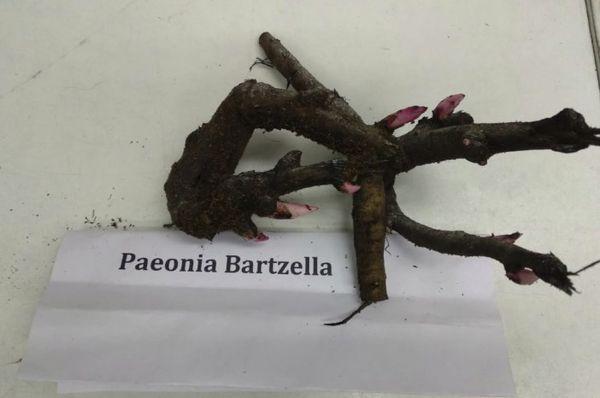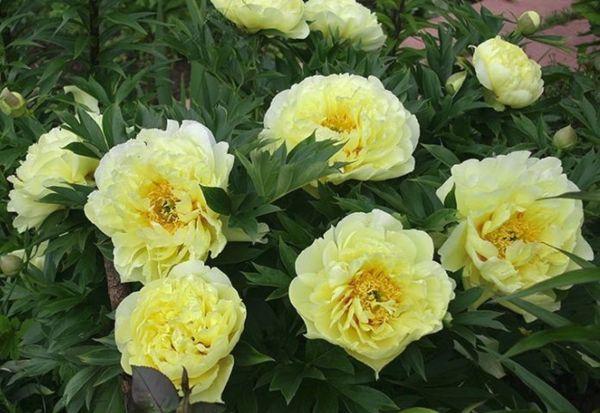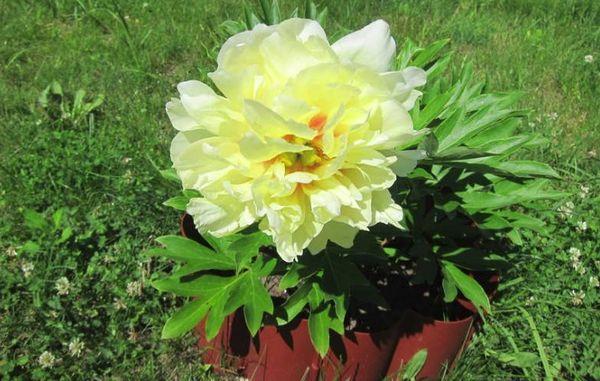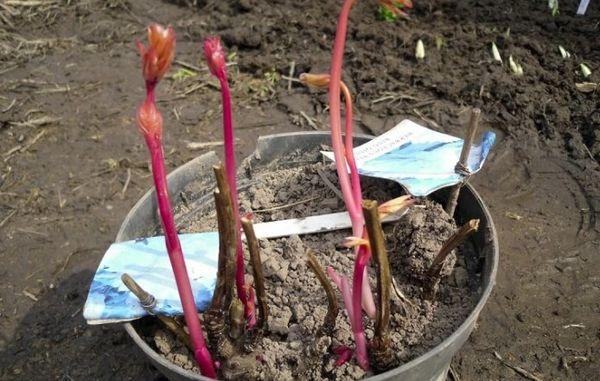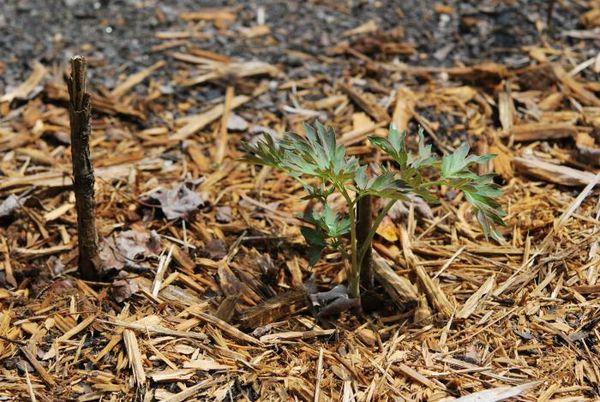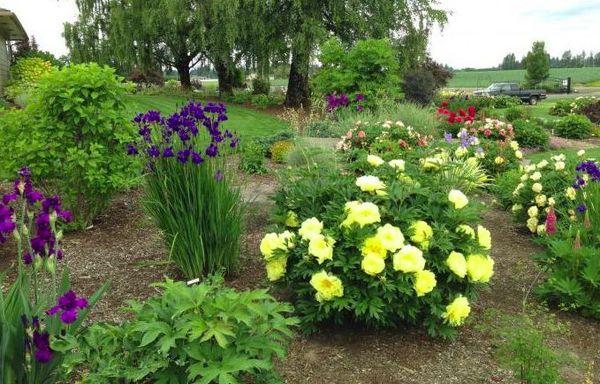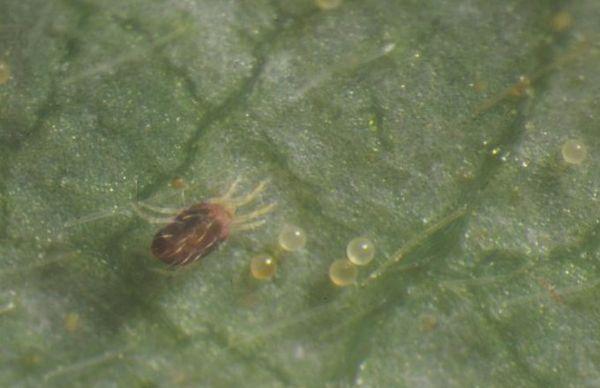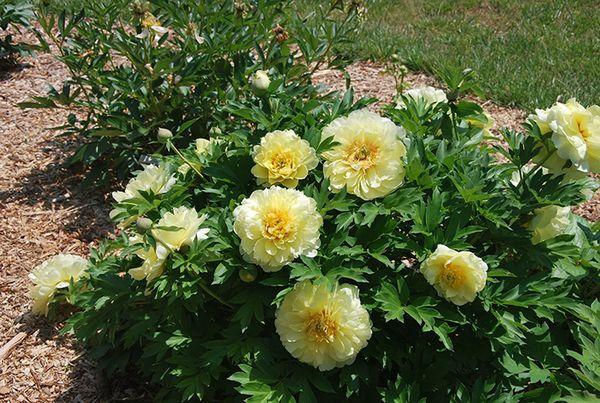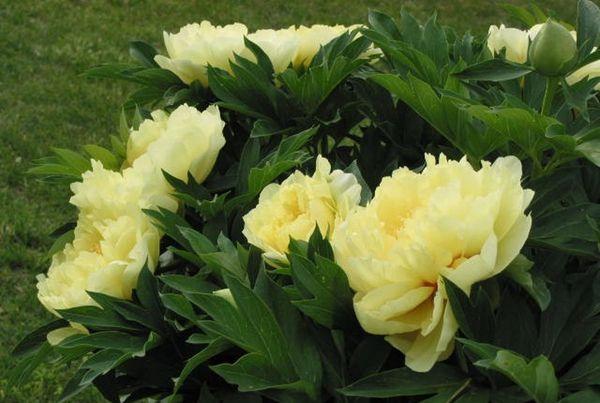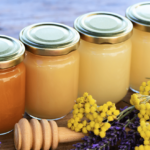Among all varieties, Bartzell peonies are considered the most expensive. This variety appeared back in 1948, thanks to a Japanese breeder, after many crossings. It is a hybrid of two varieties - Kinko and Kakoden. A perennial plant with lush yellow flowers quickly won prizes among gardeners, including in Russia, because the lower tree-like part tolerates frost well.
- Description and features
- History of the variety
- Seedling preparation
- How to choose
- How to prepare
- Landing
- Selecting a location
- Soil requirements
- Planting scheme
- Primary feeding
- Deadlines
- Care
- Watering
- Loosening and weeding
- Mulching
- Top dressing
- in spring
- When forming buds
- During the flowering period
- Before frost
- Irrigation and spraying
- Pest treatment
- Spider mite
- Aphid
- Ants
- Trimming
- Is a transplant necessary?
- Reproduction
- Root division
- Dividing the bush
- Application in landscape design
Description and features
This variety has several names, the origins of which lie in its history. They are often called Itoh hybrids in honor of Toichi Ito, the Japanese breeder who worked on breeding peonies. The other part of the name is Bartzella or Bartzella, which comes from the surname Bart. It was worn by a pastor who was a close person to the scientist’s family.
The result was a beautiful ornamental plant with the following properties:
- the bush forms a sphere;
- the leaves are large and densely cover the bush;
- stems up to a meter, woody;
- flowers are about 25 centimeters in diameter, very lush, the petals are yellow, light orange in the middle;
- Up to 60 buds appear on one plant, their number increases with age;
- blooms in early June, blooms throughout the month.
In addition to its external beauty, this hybrid is unpretentious and tolerates adverse conditions well:
- It is cold-resistant, since the woody base of the stem remains for the winter, and even if some part of it freezes, it will quickly recover. Withstands up to -30 degrees. The leaves remain green until frost.
- Not afraid of diseases and pests.
- Does not die in drought.
- It does not need to be tied up or protected from the wind.
- Suitable for bouquets, lasts in a vase for up to two weeks, does not crumble.
Therefore, the variety is highly valued by flower growers, although it is quite expensive.
History of the variety
The year of birth of this variety is 1948, when breeder Ito obtained it by crossing two other varieties:
- paternal plant – variety Kinko (tree-like);
- maternal - Kakoden (milky white).
The result was the appearance of six bushes with yellow buds, which is what the scientist wanted. But it was not Ito himself who finished work on the new variety, but his student and assistant, Anderson, who collaborated with Ito’s widow. Only in 1974 did Bartzell's peonies attract the attention of gardeners and become popular. 2002 was another important date when the variety received the Grand Prix at an international exhibition.
Seedling preparation
Although this variety is unpretentious, it is necessary to choose and prepare the seedling correctly so that your efforts are not wasted.
How to choose
The choice of planting material depends on the number of renewal buds on it. There should be at least two of them, ideally five, and the same number of roots.
How to prepare
Preparation consists of the following steps:
- Carefully cut off rotten and moldy areas.
- Sprinkle the cuts with ash.
- Disinfect the seedlings in a solution of 5 liters of water with 2 grams of potassium permanganate. This will also serve as prevention.
Landing
Before planting, be sure to take into account the characteristics of the plant, because you cannot plant it in any place you like.
Selecting a location
A peony will grow in one place for several decades. Therefore, try to choose a bright and warm enough area. There should not be tall trees or buildings nearby that will create shade, but the plant tolerates partial shade well. Avoid hollows where melt or rainwater will collect.
Soil requirements
The main condition for normal growth is nutritious soil with good drainage. You will not achieve flowering if the soil is heavy and airtight.
Planting scheme
When it comes to planting, peony is a very demanding plant. Flowers appear after at least two years, sometimes after three. But for them to appear, follow these rules:
- Prepare the hole in advance so that the soil has time to settle.
- The size of the hole should be about 60x60 centimeters.
- At the bottom you need to put a mixture of sand, peat and garden soil.
- Make sure that when burying the buds they are under a five-centimeter layer of soil, and they should also lie horizontally.
- The seedling itself is placed so that it is slightly inclined.
- The root system should be on a layer of sand.
- Also sprinkle the root collar around with sand along with ash.
Primary feeding
For peonies, primary feeding is important. Its composition depends on the soil, but a universal mixture of 150 grams of superphosphate, a can of ash and 1 tablespoon of iron sulfate is often used. This variety grows best in neutral or slightly alkaline soil. For deoxidation, you can use the following composition:
- one and a half glasses of double superphosphate;
- 300-500 grams of ash;
- from 150 to 500 grams of dolomite flour;
- 2 cups bone meal.
This mixture is applied per 1 square meter. The exact amount depends on the composition of the soil.
Deadlines
Bartzell's peony does best when planted in late August or September. The main thing is that there is at least a month left before frost, this is important for the root system. Plant in the morning or evening, but in the first case do not water the plant until the end of the day.
Care
Despite its unpretentiousness, the peony needs appropriate care. But it does not require any special or complex measures.
Watering
This variety needs regular watering, and in some cases it will require a lot of water.So, in dry times the amount reaches two buckets. You can determine the time of watering by looking at the ground near the bush - it will be needed when the top layer of soil dries out. Do not allow water to stagnate under any circumstances.
Loosening and weeding
It is necessary to loosen the soil of the Bartzella peony as often as possible, especially during the dry period and after heavy rains. Carefully remove all weeds - they greatly interfere with growth.
Mulching
These peonies are frost-resistant, but it is better to cover them for the winter, especially young bushes. To do this, use spruce branches, dry humus or leaves from the peony itself. After the snow melts, the mulch must be removed so that the plant can immediately begin to grow.
Top dressing
Be careful when feeding, do not apply too much, otherwise the bush will have a lot of leaves and few flowers.
in spring
After the snow has melted and you have removed the mulch, feed the plant with nitrogen. Then it will quickly become covered with green leaves.
When forming buds
For better flower growth, complex fertilizers are suitable.
During the flowering period
During the blooming of buds and later, you can use potassium chloride and superphosphate. Mineral concentrates or special complex fertilizers for such crops are also suitable.
Before frost
To prepare the bushes for the ground, also use mineral concentrates, preferably with a high content of potassium and phosphorus.
Irrigation and spraying
Bushes need to be sprayed only in case of drought. During rainy periods there is usually enough water.
Pest treatment
Peony Barcellus is resistant to most diseases and pests. But still, treatment against some of them is necessary so that the bush retains a healthy and beautiful appearance for a long time.
Spider mite
Typically, solutions of insecticides or fungicides are used for prevention.
Aphid
Aphids can also be eliminated using insecticides. For example, Actellik and Biotlin are good options.
Ants
Insecticides can be used, and repellents that need to be sprayed over the bushes are also suitable.
Trimming
It is carried out in the fall, before wintering. Peony is very different from other plants in that it can be cut almost to the ground, but gardeners advise leaving about 8 centimeters.
If you cut lower, then you don’t have to worry about the safety of the bush, because buds always remain underground. To prevent the plant from rotting, prune on a dry, warm day. During the summer months, prune after the flowers have dried. Also pick off the buds on young plants, then the bush will become stronger.
Is a transplant necessary?
Transplantation itself is not necessary for peony. In addition, this variety does not tolerate this procedure well. If replanting is still necessary, do it in the autumn months. It is important to divide the roots, otherwise they will interfere with each other.
Reproduction
Propagation by seeds is not carried out, since the decorative qualities of the variety will not be preserved. Instead, the root or bush is divided.
Root division
This method of reproduction is carried out in August or September and is divided into several stages:
- Choose an adult plant (at least three years old).
- Carefully dig up the root, but do not damage it in any way, otherwise the peony will easily die.
- Cut off the part with the buds.
- Treat the cut with manganese and dry it before planting it back.
- The new seedling is also processed and transferred to a permanent place.
Dividing the bush
When dividing a bush, you must first dig it up on all sides in order to remove it along with the roots.You need to dig at a distance of 50 centimeters from the plant, no less, since the root system grows strongly to the sides.
When dividing the bush, you need to leave 2-3 buds on each part. Therefore, it will not be possible to obtain many seedlings from one plant.
Application in landscape design
Peony Bartzell looks great both alone and in compositions. Due to the fact that its stems are woody, the bush retains its shape and the flowers do not deviate to the side, even when there are many of them. The leaves do not lose their decorative properties throughout the entire season; even when frost occurs, they are preserved.



